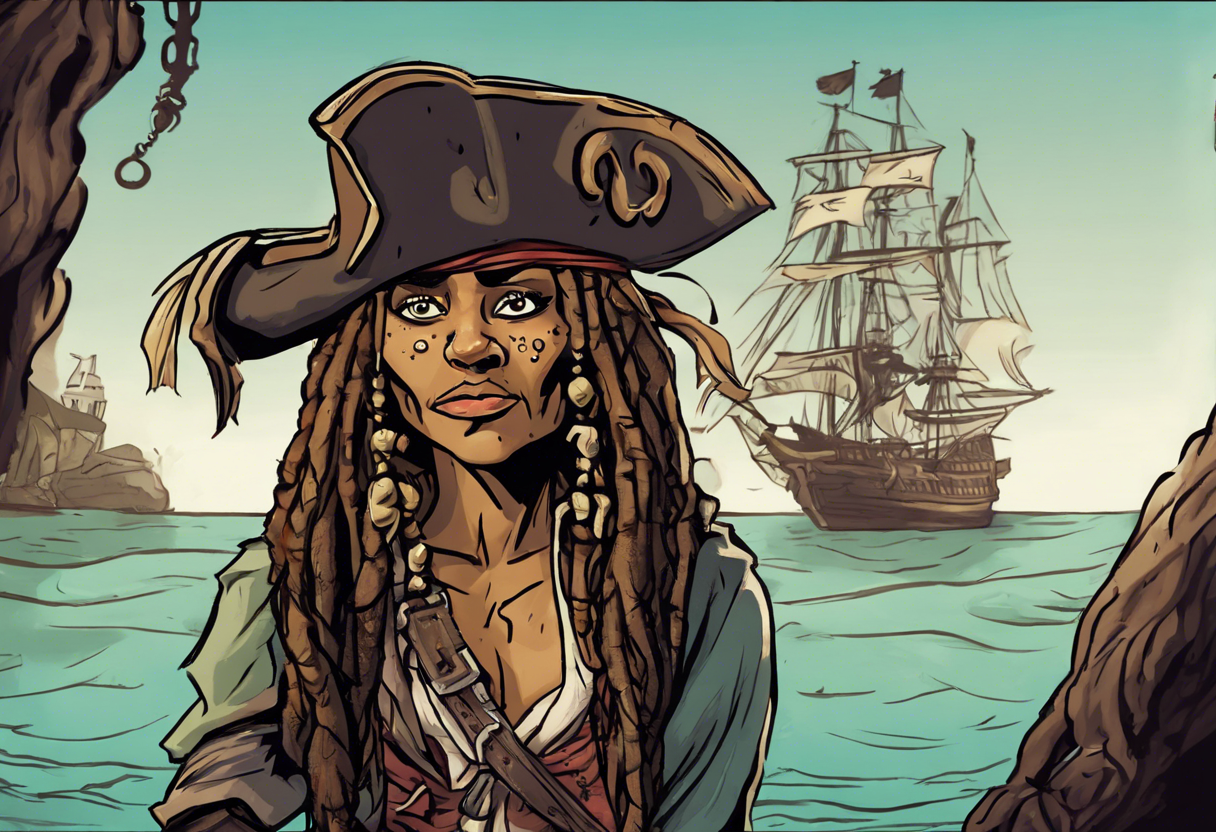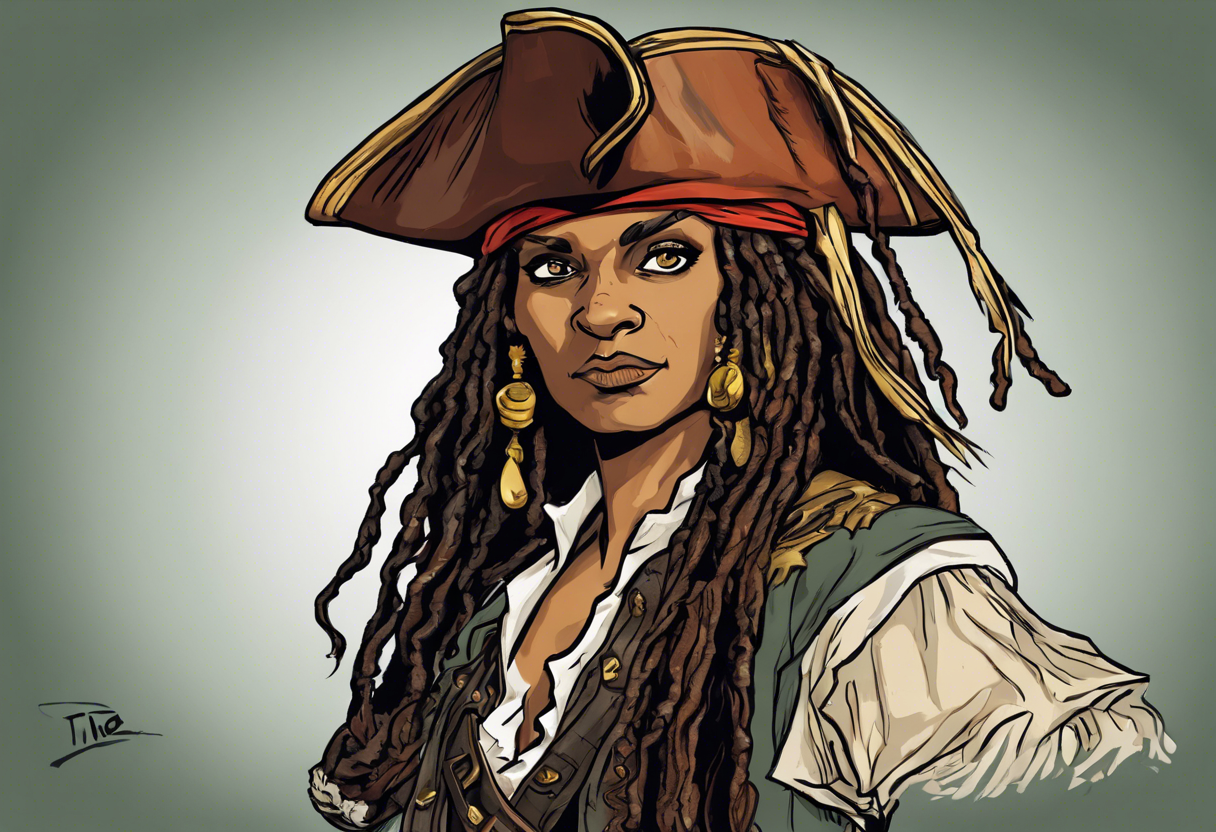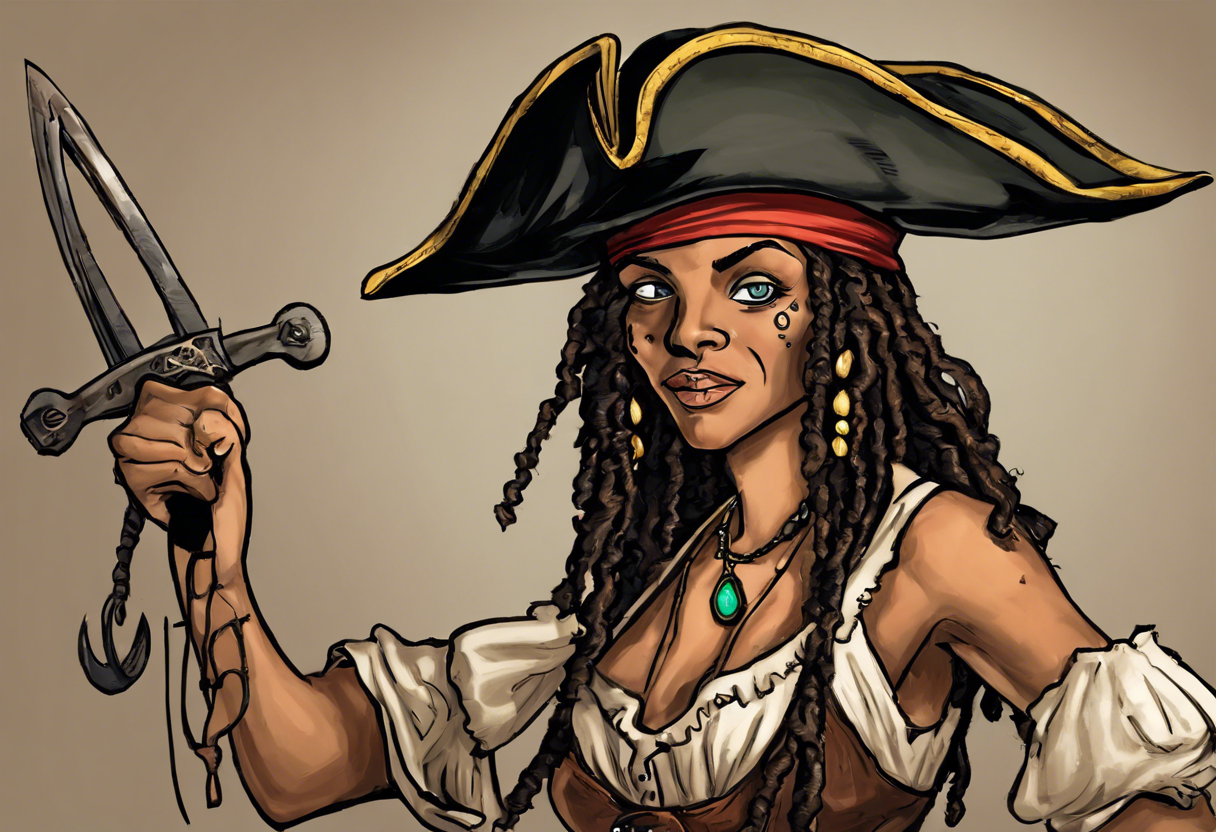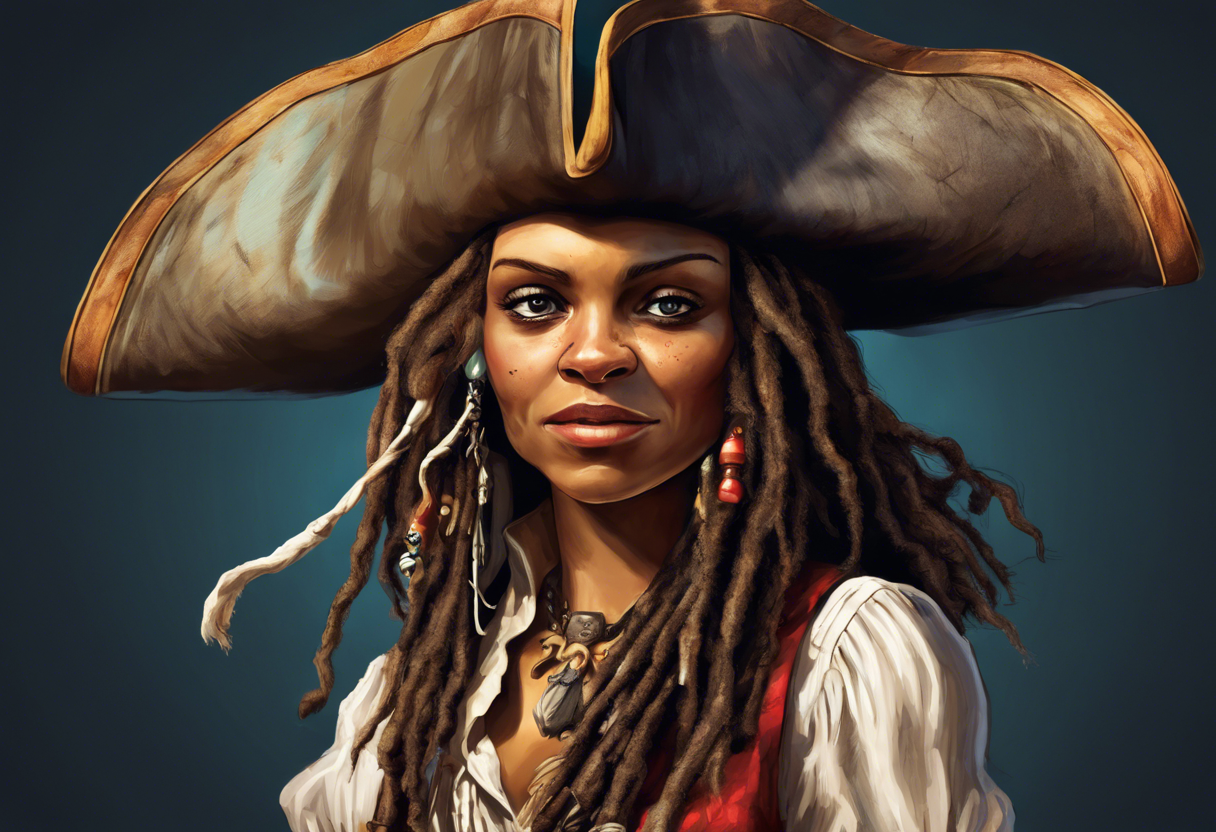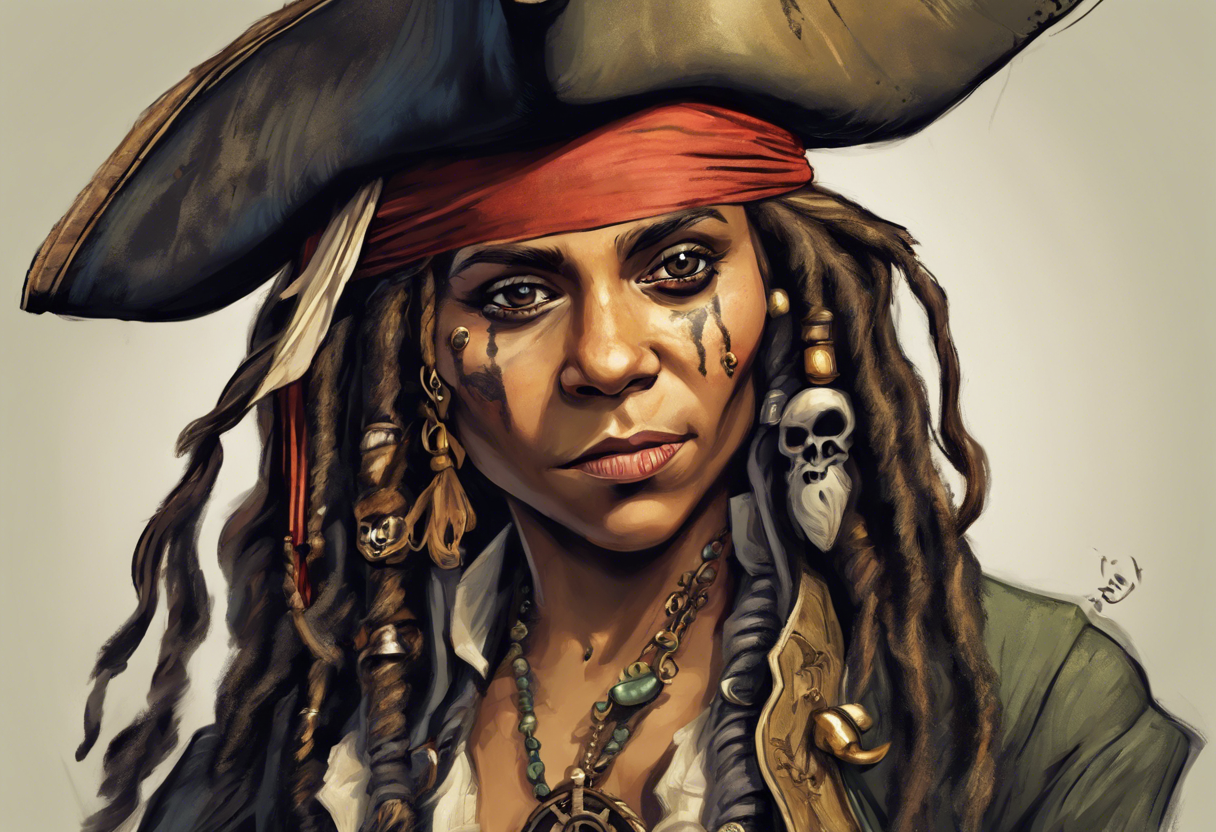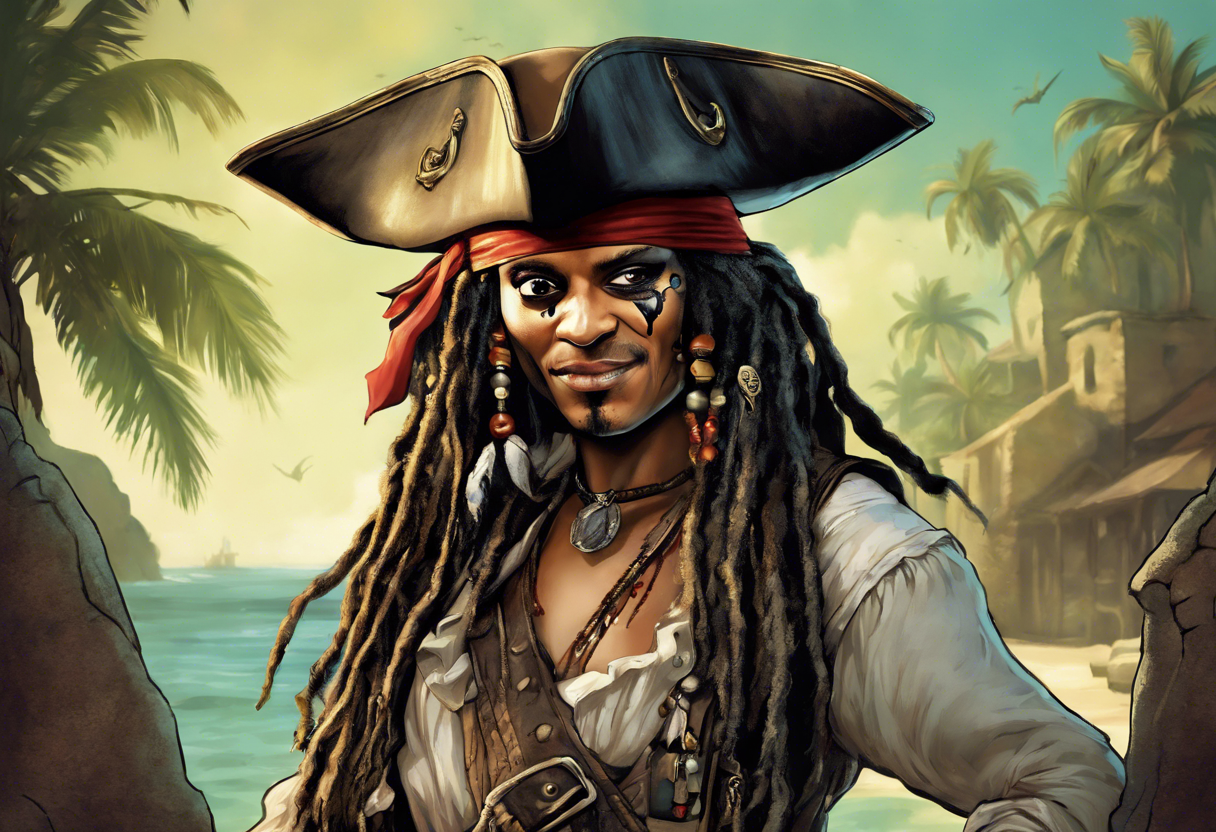Tia Dalma: The Enigmatic Sea Goddess of the Pirates of the Caribbean
Introduction
Tia Dalma, a pivotal character in the Pirates of the Caribbean franchise, is a complex and multifaceted figure whose true identity as the sea goddess Calypso adds depth and richness to the narrative. Introduced in the 2006 film Pirates of the Caribbean: Dead Man’s Chest, Tia Dalma is portrayed by Naomie Harris, who brings to life a character steeped in mysticism, power, and a deep connection to the sea.
Tia Dalma’s creation is rooted in Caribbean folklore and mythology, particularly drawing from the figure of Mami Wata, a mysterious and seductive spirit linked to the sea [3][5]. As a voodoo and hoodoo practitioner, Tia Dalma embodies the exotic and the supernatural, reflecting the romanticized colonial era perception of the Caribbean.
Her defining traits include her enigmatic presence, flirtatious and sensual demeanor, and her ability to wield significant supernatural powers. Tia Dalma’s role in the narrative is crucial as she navigates the intricate web of pirate politics and divine revenge, making her a compelling and central character in the franchise.
Role in the Story
Tia Dalma’s storyline is intricately woven into the larger narrative of the Pirates of the Caribbean trilogy. Initially, she appears as a mysterious and powerful sorceress living in a swampy lair filled with shrunken heads and other occult artifacts. Her introduction is marked by her revival of Captain Barbossa, a move that sets in motion a series of events that will shape the destiny of the pirate world [2][5].
As the story unfolds, it becomes clear that Tia Dalma is not just a simple sorceress but the mortal guise of Calypso, the sea goddess. Her backstory reveals a tragic love affair with Davy Jones, who betrayed her and had her imprisoned in human form by the First Brethren Court of pirates. This betrayal led to her cursing Davy Jones and his subsequent transformation into the captain of the Flying Dutchman [3][5].
Tia Dalma’s primary goal is to free herself from her mortal form and exact revenge on Davy Jones. To achieve this, she manipulates events to bring together the nine Pirate Lords, each possessing a Piece of Eight, the talismans necessary to release her from her human prison. Her plan involves resurrecting Captain Barbossa and aiding Jack Sparrow, both of whom are crucial to her liberation [2][5].
The climax of her storyline occurs in Pirates of the Caribbean: At World’s End, where she is finally freed and transforms back into Calypso. In this form, she unleashes a maelstrom that wreaks havoc on the high seas, killing many characters and fulfilling her vendetta against Davy Jones [2][5].
Character Analysis
Tia Dalma’s personality is a blend of sensuality, power, and a deep connection to the natural world. She is depicted as flirtatious, coquettish, and pleasure-loving, traits that align with the mythological figure of Calypso [3]. Her motivations are driven by a desire for freedom and revenge against those who wronged her.
One of the compelling aspects of Tia Dalma is her dominion over masculine energies, as she navigates and manipulates the male-dominated world of piracy with ease. Her relationships with characters like Jack Sparrow and Captain Barbossa are complex, involving elements of romance, mutual respect, and strategic alliances [1][3].
Tia Dalma’s strengths lie in her supernatural powers and her cunning. As a hoodoo sorceress, she can revive the dead and manipulate the physical world in ways that other characters cannot. Her flaws, however, include her vulnerability when trapped in her human form and her intense emotional investment in her vendetta, which sometimes clouds her judgment [5].
The character’s development throughout the trilogy is significant, as she transitions from a mysterious figure to a fully realized goddess. This transformation highlights her growth from a confined, mortal form to a powerful, divine entity capable of shaping the world around her.
Themes and Symbolism
Tia Dalma embodies several themes and symbolic elements that are central to the Pirates of the Caribbean narrative. She represents the power of nature and the untamed forces of the sea, reflecting the awe and fear that sailors have for the ocean [3][5].
Her character also delves into the theme of colonialism and the power dynamics between different cultures. Tia Dalma’s portrayal as a strong, independent woman from a Caribbean background challenges traditional colonial stereotypes and highlights the agency and power of women in non-Western cultures [3].
The symbolism of her transformation from Tia Dalma to Calypso is profound, representing the liberation of a powerful female figure from the constraints imposed by patriarchal societies. This transformation also symbolizes the cyclical nature of life and death, as well as the enduring power of the sea and its goddess.
Cultural Impact
Tia Dalma has had a significant cultural impact since her introduction in the Pirates of the Caribbean franchise. Her character has been well-received by fans for her complexity and the depth she brings to the story. Naomie Harris’s portrayal of Tia Dalma has been praised for its authenticity and cultural sensitivity, drawing from her own Jamaican heritage [3].
In adaptations and spin-offs, Tia Dalma has appeared in various forms, including video games and theme park attractions. Her influence on popular culture is evident in the way she has become a symbol of female power and mysticism, inspiring other characters and storylines in different media.
However, her character has also been subject to criticism for perpetuating certain stereotypes about Caribbean culture and the exoticization of non-Western spiritual practices. Despite these criticisms, Tia Dalma remains a beloved and iconic character in the franchise.
Critical Reception
Critics and audiences have had varied reactions to Tia Dalma over the years. Many have praised her as a strong and compelling female character who brings a unique perspective to the narrative. Her performance by Naomie Harris has been lauded for its nuance and depth, adding a layer of complexity to the film that might otherwise be lacking [3][5].
However, some critics have argued that the character’s potential was not fully realized, particularly in the third film where her transformation into Calypso could have been more fully explored. The character’s reliance on stereotypes about Caribbean culture and voodoo practices has also been a point of contention [2][3].
Despite these mixed reviews, Tia Dalma remains one of the most memorable and intriguing characters in the Pirates of the Caribbean franchise.
Legacy
Tia Dalma’s legacy in the Pirates of the Caribbean franchise is enduring and multifaceted. She has inspired a new generation of characters in fantasy and adventure films, embodying the archetype of the powerful, mystical female figure.
Her relevance in contemporary discussions about representation and diversity in media is significant. Tia Dalma’s character challenges traditional stereotypes and offers a fresh perspective on female power and agency, making her a compelling subject for analysis and discussion.
In conclusion, Tia Dalma is a character whose impact extends far beyond her role in the Pirates of the Caribbean trilogy. She is a symbol of female power, a representation of the untamed forces of nature, and a testament to the enduring appeal of complex, multifaceted characters in modern cinema.
References
- https://potc-dogwatch.livejournal.com/96147.html
- https://screenrant.com/pirates-caribbean-original-trilogy-wasted-tia-dalma-calypso-how/
- https://en.wikipedia.org/wiki/Tia_Dalma
- https://www.wikiwand.com/en/articles/Talk:Tia_Dalma
- https://screenrant.com/pirates-caribbean-tia-dalma-calypso-backstory-explained/

